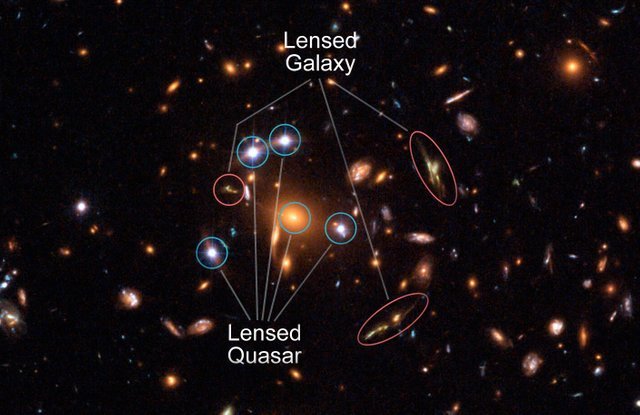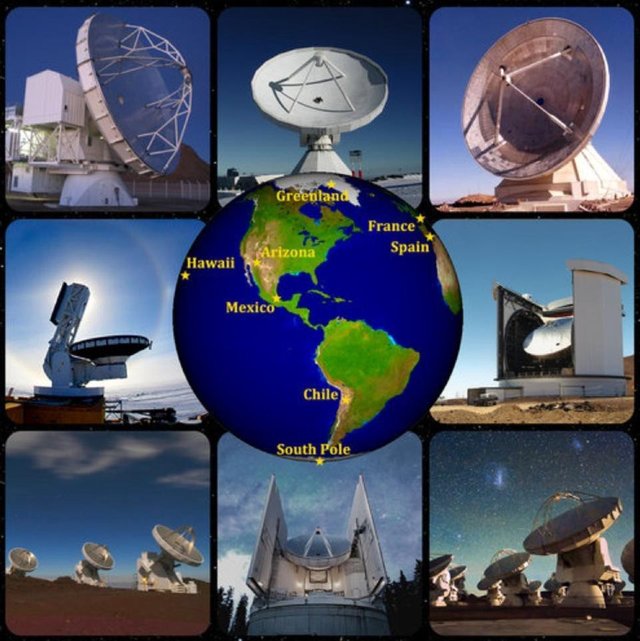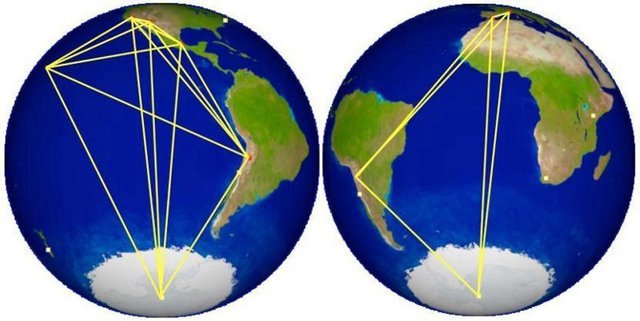HERE'S HOW We Photographed Black Hole M87
Introduction
As I am sure you have already heard, on April 10th the Event Horizon Telescope released our first ever photograph of a black hole! But are you still curious on how exactly this is even possible? If so, then you are in luck! Today I will be doing my best to present an easy to understand summary of some of the most important concepts behind the research.
As it turns out, just over a year ago I wrote a post based on what was written by American astrophysicist Ethan R. Siegel. In his blog post, he described the method which the Event Horizon Telescope successfully used to detect black holes directly! You can access his article [here] as well as from my work cited below. As a celebration of their discovery, please join me in taking a second look into this exciting new concept!
As a side note, while looking over and adding to my previous article, I found an outdated comment on which black hole the scientist were most optimistic about. Rather than removing these thoughts I have annotated with a strikethrough and added an update addition with italics.
We will begin our mission by understanding how we currently detect black holes, then will learn about the improvements to these methods made possible by the Event Horizon Telescope.
How Have We Historically Detected Black Holes?
An indirect method to detect black holes is by observing its effect on nearby matter. For example, if we were find either a collection of matter (such as a nebula or galaxy) which is being dramatically pulled away from what appears to be the central mass we can then predict the black holes location which would result in the central mass being the center of the masses true orbit.
Here is a video from NASA describing a star from a dwarf galaxy being ripped apart by a black hole! It includes an animation of how we expect it to fall into the black hole.
On To The Event Horizon Telescope!
Through the Event Horizon Telescope, another approach is to use observe the light passing near a black hole. Through a process known as gravitational lensing, light waves passing alongside a black hole (but outside of its event horizon) are bent and redirected around it. This can create a “ring” of light outlining the black hole and magnifying the surrounding region's brightness.
Here is a capture from the Hubble Space Telescope including gravitational lensing in several galaxies and quasars.

Until recently, we did not have any actual images because black holes are simply too infrequent and far away from Earth! The black hole which would be the easiest for us to observe is the Sagittarius A* black hole in the center of our galaxy. Despite being the closest to us Sagittarius A it is still a staggering 27,000 light years away! It turns out the monstrous black hole M87 won the glory of having its data optimized before Sagittarius A. Although M87 is more than 55 million light-years away from earth it ended up looking more consistent over shorter timescales making it easier to process.
Here is the shot of M87 from earlier this week:

Calling the Event Horizon Telescope a telescope is slightly misleading. Rather than being a single telescope it is an assortment of high-power telescopes from around the planet! By focusing multiple telescopes on the same region of space we can essentially create a mega telescope by combining their data into one image. This allows for the Event Horizon Telescope to make out anything objects in a region as small as 15 microarcseconds (uas) or in other words a region of about 4.2 e-9 degrees! Ethan Siegel described this as a small enough angle to resolve a fly on the surface of the moon!
Here are some images depicting eight of the radio telescopes and how they are connected!


What Made This Successful!
Once the Event Horizon Telescope collects its data, it takes advantage of the power of Fourier Transforms to decompose a single electronic signal for the multiple incoming radio waves. Thanks to the physics and mathematics, behind them the Event Horizon Telescope benefits greatly from the large distances between its observatories.
And finally, here is an excellent introductory video on fourier transforms:
If you have any questions or know anything you would like to add feel free to do so in the comments! Or if you have any suggestions on how I can improve I would love to hear them! If you enjoyed my content, please consider upvoting to help others find my content or even follow me if you would like to hear more!
Work Cited:
https://medium.com/starts-with-a-bang/2018-will-be-the-year-humanity-directly-sees-our-first-black-hole-c20a1429d3e2
https://science.nasa.gov/astrophysics/focus-areas/black-holes
https://en.wiktionary.org/wiki/arcsecond
https://www.nasa.gov/content/hubble-highlights-shining-a-light-on-dark-matter
https://www.nasa.gov/mission_pages/chandra/news/death-by-black-hole.html
https://www.space.com/black-hole-photography-event-horizon-telescope-future.html
Hi, steemchess is calling!
Sorry for interrupting, but I have some news for you:
https://steemit.com/steemchess/@schamangerbert/steem-world-chess-championship-2020-january-3-5
It would be great if you participate, good luck!
This post has been voted on by the SteemSTEM curation team and voting trail. It is elligible for support from @curie.
If you appreciate the work we are doing, then consider supporting our witness stem.witness. Additional witness support to the curie witness would be appreciated as well.
For additional information please join us on the SteemSTEM discord and to get to know the rest of the community!
Please consider setting @steemstem as a beneficiary to your post to get a stronger support.
Please consider using the steemstem.io app to get a stronger support.
Congratulations @thequantumknight! You have completed the following achievement on the Steem blockchain and have been rewarded with new badge(s) :
You can view your badges on your Steem Board and compare to others on the Steem Ranking
If you no longer want to receive notifications, reply to this comment with the word
STOPVote for @Steemitboard as a witness to get one more award and increased upvotes!
Congratulations @thequantumknight! You received a personal award!
You can view your badges on your Steem Board and compare to others on the Steem Ranking
Vote for @Steemitboard as a witness to get one more award and increased upvotes!